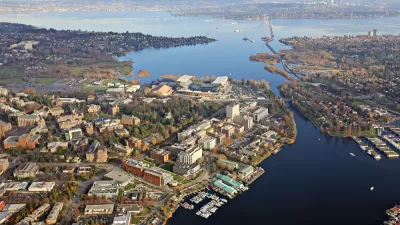Norway's carbon emissions have increased 15% since imposing a carbon tax in 1991, unlike neighbor's Sweden and Denmark where emissions decreased with their carbon taxes. Unlike the oil industry which became carbon-lean, Norway's drivers didn't change
"In 1991, Norway became one of the first countries in the world to impose a stiff tax on harmful greenhouse gas emissions. Since then, the country's emissions should have dropped. Instead, they have risen by 15%."
However, considering that economic growth has grown 70% while GHG emissions rose only 15% since 1990, the carbon tax has proven effective.
As a result of carbon sequestration in the North Sea, Norway's oil industry, measured in CO2 emissions per ton of oil and gas extracted, is 39% the industry average.
The real failure has been in transportation. "Norwegians are used to paying high prices at the pump: a gallon of gasoline costs around $9 to $10, and about 6% of the price comes from the carbon tax. Yet since two-thirds of Norwegians live in the countryside, they pay up and keep driving."
FULL STORY: An Exhausting War on Emissions

Planetizen Federal Action Tracker
A weekly monitor of how Trump’s orders and actions are impacting planners and planning in America.

Map: Where Senate Republicans Want to Sell Your Public Lands
For public land advocates, the Senate Republicans’ proposal to sell millions of acres of public land in the West is “the biggest fight of their careers.”

Restaurant Patios Were a Pandemic Win — Why Were They so Hard to Keep?
Social distancing requirements and changes in travel patterns prompted cities to pilot new uses for street and sidewalk space. Then it got complicated.

Platform Pilsner: Vancouver Transit Agency Releases... a Beer?
TransLink will receive a portion of every sale of the four-pack.

Toronto Weighs Cheaper Transit, Parking Hikes for Major Events
Special event rates would take effect during large festivals, sports games and concerts to ‘discourage driving, manage congestion and free up space for transit.”

Berlin to Consider Car-Free Zone Larger Than Manhattan
The area bound by the 22-mile Ringbahn would still allow 12 uses of a private automobile per year per person, and several other exemptions.
Urban Design for Planners 1: Software Tools
This six-course series explores essential urban design concepts using open source software and equips planners with the tools they need to participate fully in the urban design process.
Planning for Universal Design
Learn the tools for implementing Universal Design in planning regulations.
Heyer Gruel & Associates PA
JM Goldson LLC
Custer County Colorado
City of Camden Redevelopment Agency
City of Astoria
Transportation Research & Education Center (TREC) at Portland State University
Camden Redevelopment Agency
City of Claremont
Municipality of Princeton (NJ)





























